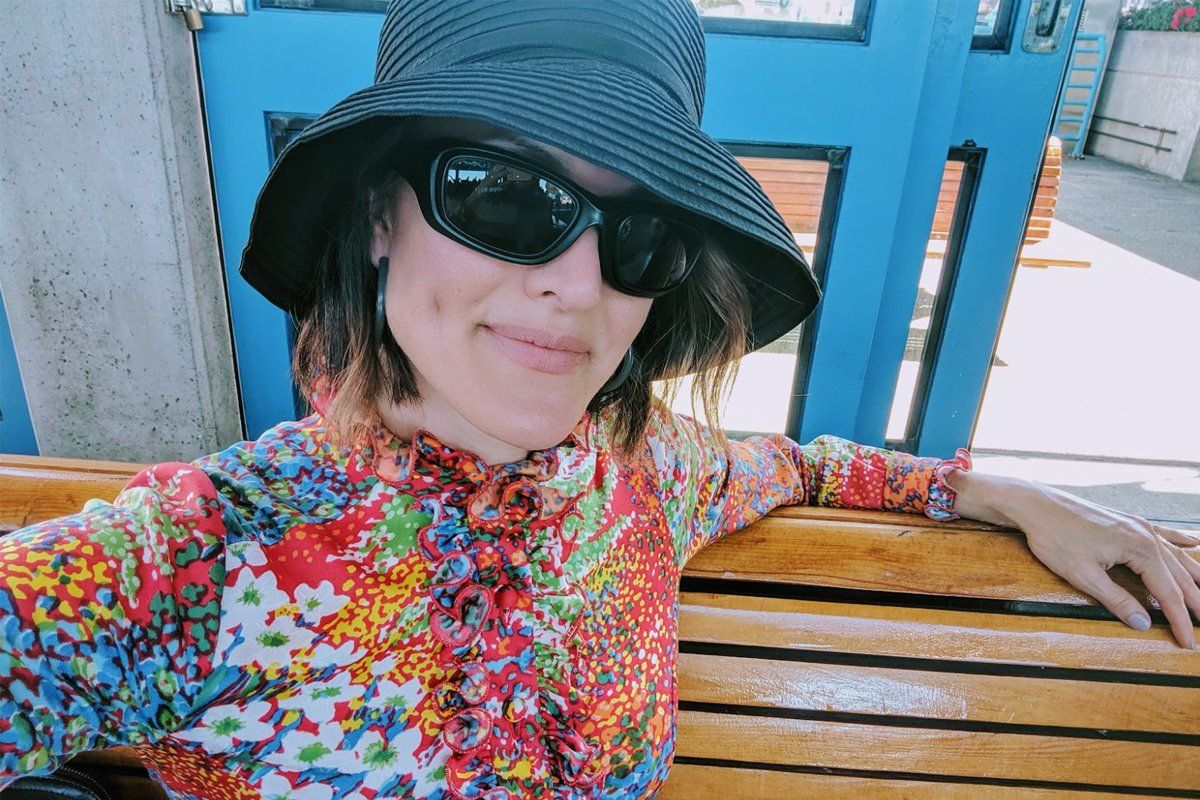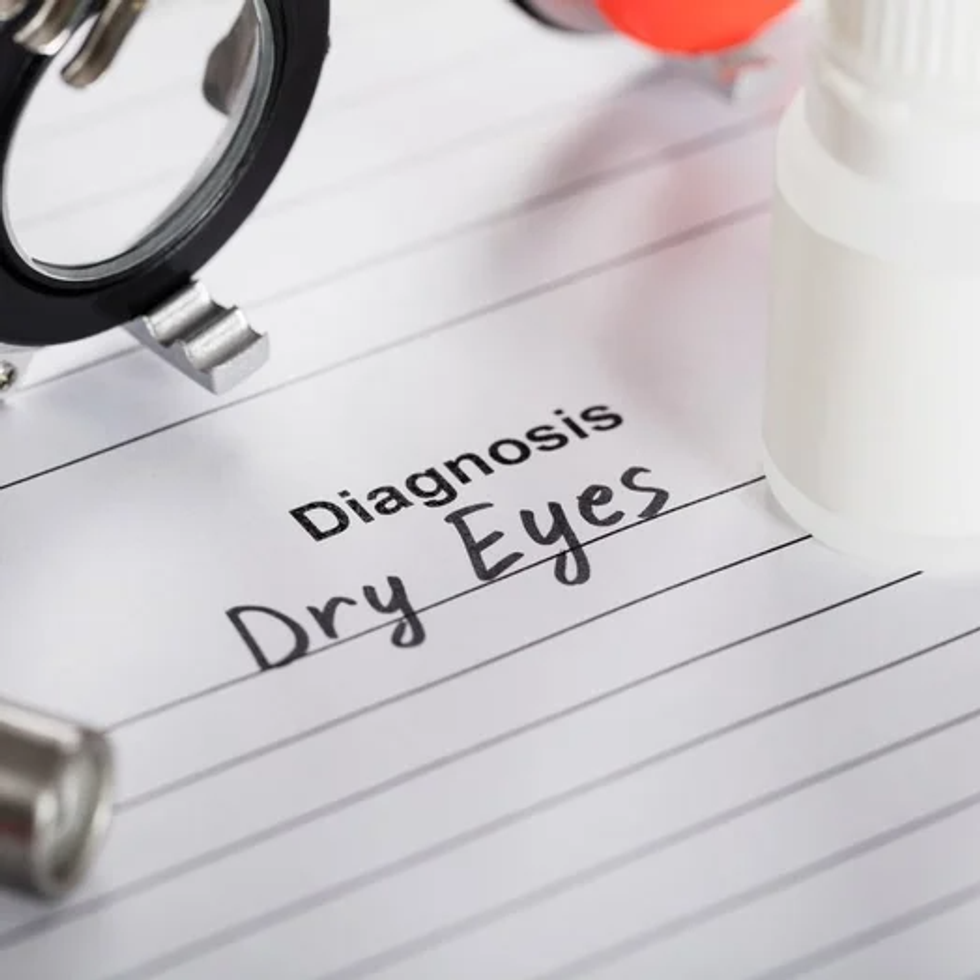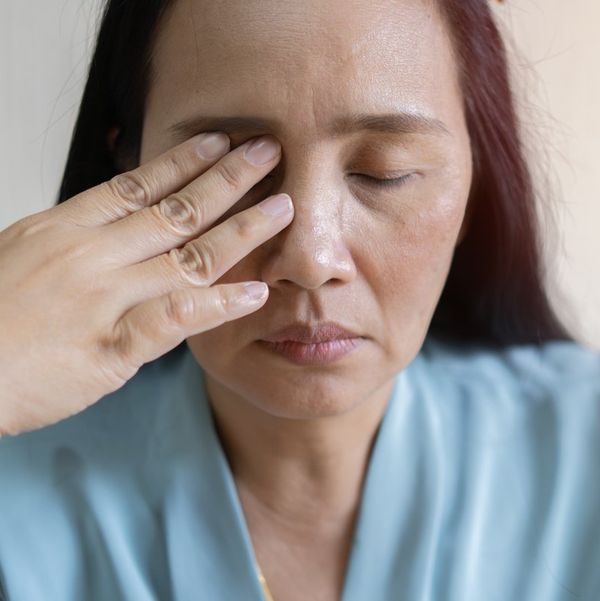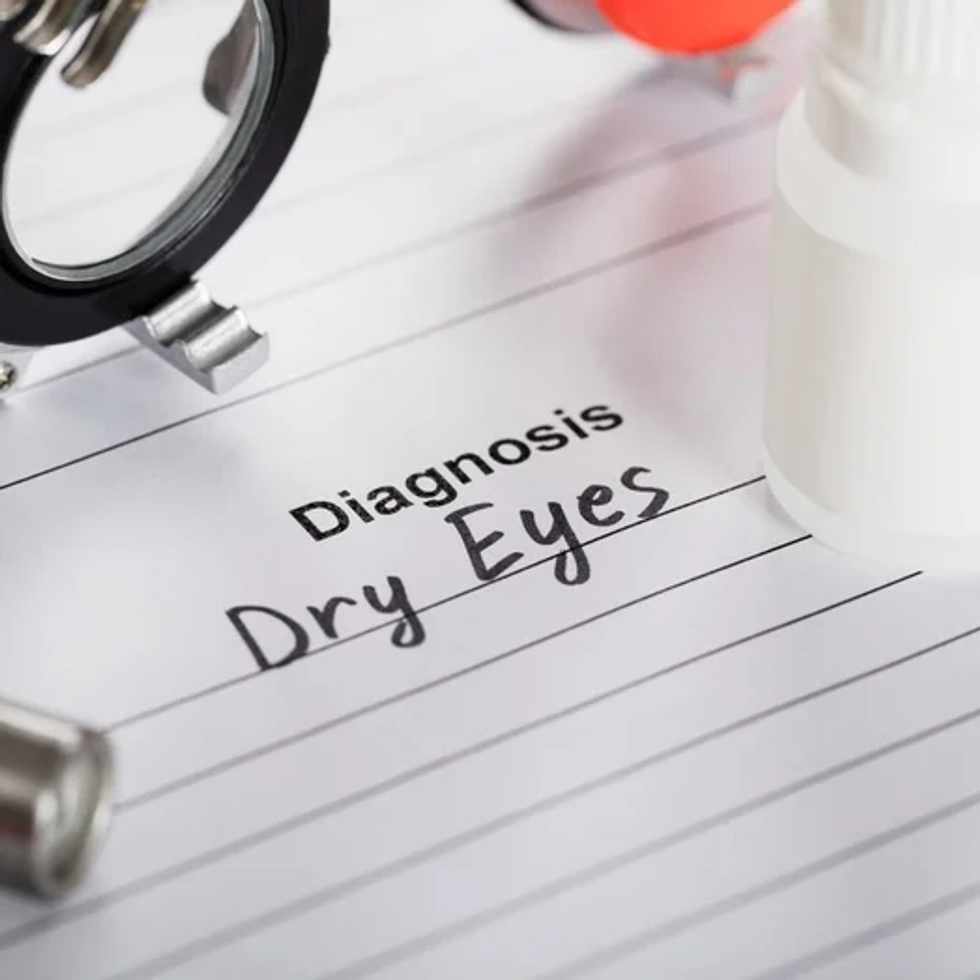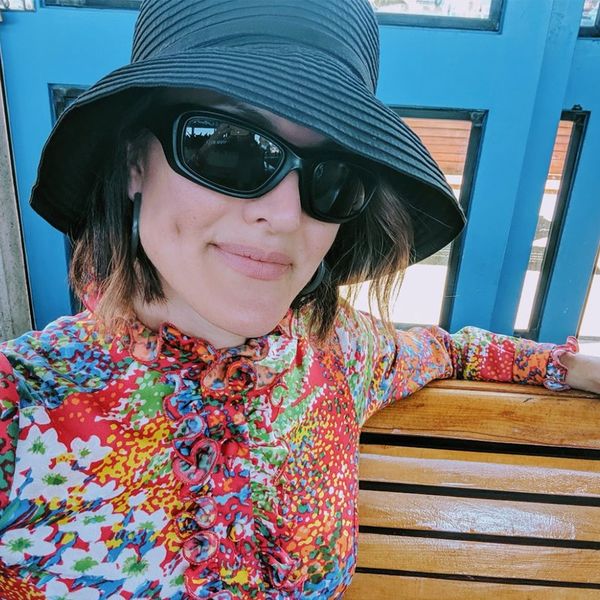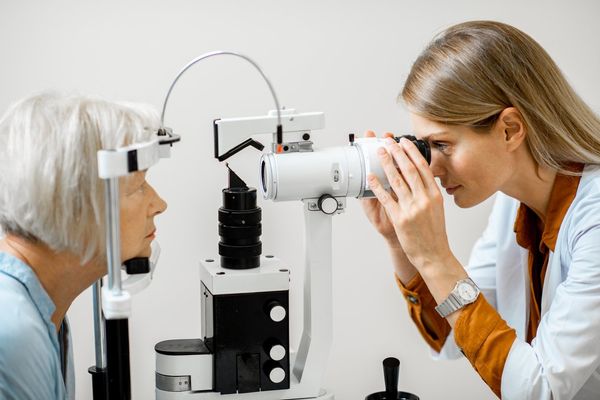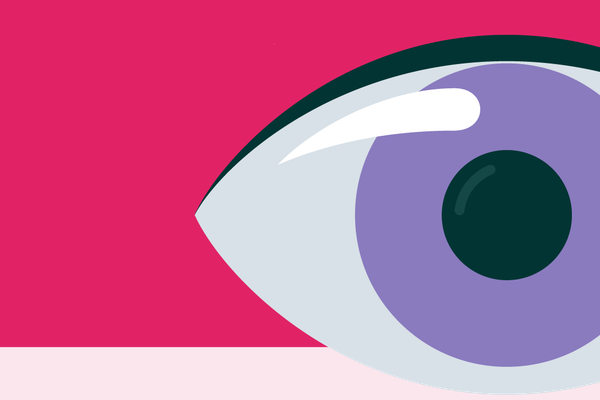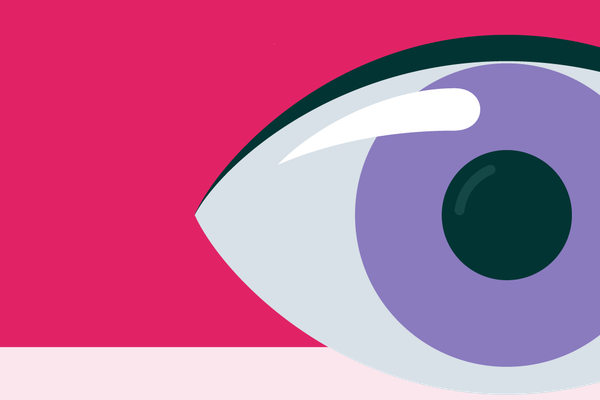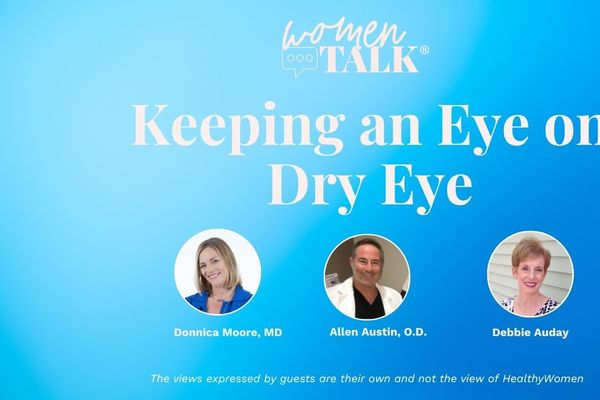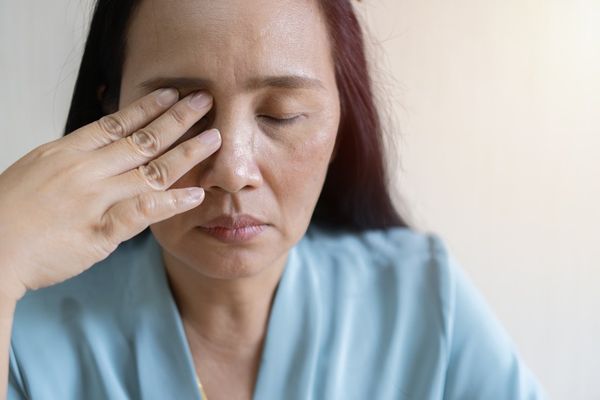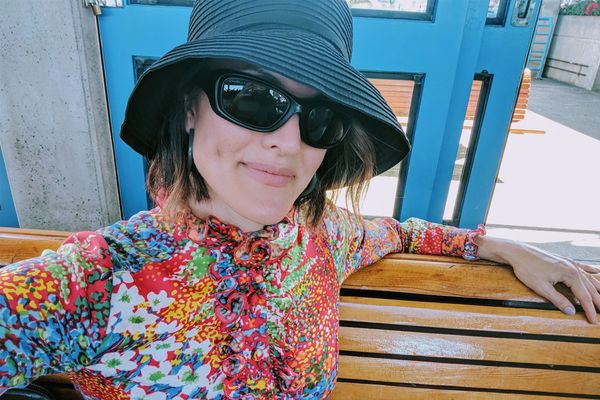As told to Erica Rimlinger
Imagine walking on the beach on a windy day. Sand blows into both your eyes. The sand hurts, itches and no amount of saline will dislodge it. Now imagine living with that sensation every day, for decades. That is my experience with dry eye disease.
The symptoms started when I was a sophomore in college. Each morning, as I opened my eyes, I felt my eyelids scrape across my eyeballs like sandpaper. At this point in my life I wore contacts. I constantly poured saline over them: taking them out, rinsing them off and reinserting them. But no amount of saline helped, and pints, liters and gallons of expensive eye drops failed to make the itchy, dry pain in my eyes any better.
Wearing my contact lenses was obviously out of the question now, so I switched to my old, hideous glasses. (I was 19 at the time and quite vain.) At the same time, I started experiencing intense and long-lasting migraine attacks. By spring, my eyes were so dry that when I heard my alarm chime, I’d lie in the dark with my eyes closed, dreading the ordeal of opening them up and starting my day. My 4.0 GPA began to slide. I felt like I’d lost control of my life.
An eye doctor said I had dry eye disease. I was relieved to get a diagnosis: Now I could get treated and get my life back. But the recommended treatments only made my eye irritation worse. I followed them faithfully: applying warm compresses to my eyes for five minutes each morning and evening. I obediently used the eye drops with preservatives that, I’d learn years later, worsened my type of dry eye disease. The doctor even recommended I apply a certain brand of baby shampoo directly on my eyelids, a suggestion I abandoned when I could no longer handle the pain and stinging.
Meanwhile, my migraine attacks kept getting worse, my grades continued their downward slide, and not having any information or solutions had a huge emotional and psychological impact on me. Even though I had the diagnosis of dry eye disease, I didn’t know what caused it or how to treat it. I needed to know why I was dealing with this terrible chronic condition and how to make it stop.
A doctor in Boston told me I wasn’t blinking fully and assigned blinking exercises, along with procedures called meibomian gland expressions, which involved a metal device, a lot of expense, and a fair amount of pain. I continued these exercises until another doctor told me I blinked just fine.
I was working four jobs to afford law school, and too much of my money went into doctor’s visits and eye drops. The financial toll was nearly as bad as the emotional toll. I was desperate to find the solution that would make my eyes feel “normal” again. In my desperation, I spent thousands in office treatments and over $3,000 per year for one type of eye drop treatment, which I later discovered did not include the active ingredients it claimed it did, and of course, did nothing to help my eyes feel better.
I dove into my own research and found an ophthalmologist who was able to get me some answers. I learned there were two types of dry eye disease. The more common type, evaporative dry eye disease, affects the oil layer in the eye. Around 9 out of 10 people with dry eye disease have this type and it responds to some of the treatments I had been offered. I had aqueous deficiency, which means my eyes don’t make enough tears. Around 1 in 10 dry eye patients are aqueous deficient.
Our tears lubricate and protect our eyes, not just keeping them comfortable, but washing out germs and tiny foreign objects. Aqueous deficiency, or having too little tear fluid, is harmful to the normal functioning of your eye. Tear film is one part of the eye’s protective shield against things in the air that can irritate your eyes, like smoke or pet dander, that come at us all day long.
Sometimes, this type of dry eye disease can respond to cauterization, or sealing, of the tear ducts. Sealing the tear ducts closes them, to keep the few tears I do produce in my eyes longer. I had this done four or five times; each time coming out of surgery looking like a boxer with two black eyes. This surgery isn’t the right treatment for everyone, but it did finally work for me, and for the past five years, the ducts have remained closed. It is likely they will reopen, and I will have to go through the process again.
I found myself obsessing over my condition, poring over medical studies and searching for answers in medical journals. The obsession made me feel depressed, anxious and, many times, physically worse. (It makes sense that reading about painful, itchy eyes would make your painful, itchy eyes even more painful and itchy.)
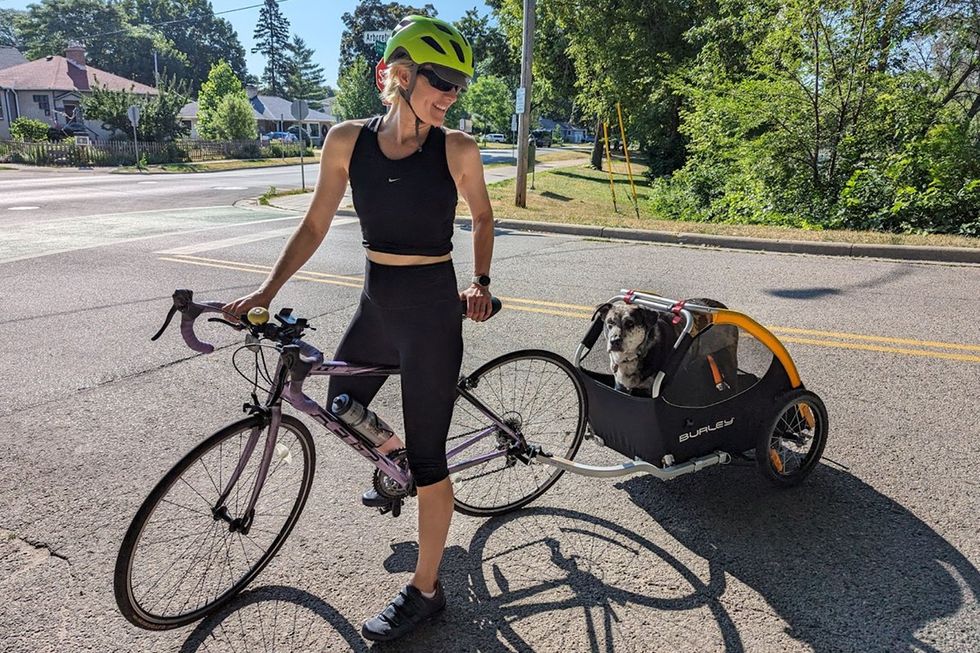
2023
But reading about my disease, trying different treatments recommended by medical professionals and determining which worked for me gave me a sense of control, and ultimately, gave me some actual ways to manage my disease. I learned how to care for my condition. I gave up wearing eye makeup. (I loved eye makeup, so this was a sacrifice.) I bought moisture chamber glasses. These are glasses, originally created for motorcyclists, that seal to your face to keep out irritants that my dry eyes can’t flush out. I use the glasses at home when I have the fan on, when there’s a fire on, or even when working at the computer, since we tend to blink less when staring at a screen. I don’t love wearing them in public, but I wear them to protect my eyes in dry environments like airplanes. I also have a pair of moisture chamber sunglasses I use outside. These allow me to do some of my favorite activities, such as biking and gardening, without having to worry about the wind or soil irritating my eyes.
I found a chat group called Dry Eye Zone Forum, where I found other people who knew what I was going through. I got more involved with the group by reaching out to the founder of the Dry Eye Foundation, who, like me, is a researcher by nature and feels empowered by actively seeking information about this poorly understood condition. The connections I’ve made and the help I can give other people have been so helpful to me.
I’ve cobbled together a regimen of treatments and lifestyle changes that currently works for me. Today, I cope with this chronic condition under the care of a doctor with expertise in my type of dry eye disease, using the current tools in my toolbox and maybe adding some new ones.
But the most important factor in my disease management is reaching out to others. Addressing the mental health challenges that come with dry eye disease is a crucial part of how I cope. Handling our chronic condition together makes the burden more bearable. Even if we only make a few tears, we don’t have to cry alone.
Additional Resources
Have a Real Women, Real Stories of your own you want to share? Let us know.
Our Real Women, Real Stories are the authentic experiences of real-life women. The views, opinions and experiences shared in these stories are not endorsed by HealthyWomen and do not necessarily reflect the official policy or position of HealthyWomen.
- Dry Eye 2024 - HealthyWomen ›
- Sjögren's Hub - HealthyWomen ›
- FAQs About Dry Eye Disease ›
- Eye Conditions & Disorders - HealthyWomen ›
- Chronic Dry Eye ›
- Facts About Dry Eye Disease - HealthyWomen ›
- Información relacionada con el trastorno de ojo seco - HealthyWomen ›
- How Dry Eye Can Affect Your Life - HealthyWomen ›
- En qué forma el ojo seco afecta tu vida - HealthyWomen ›
- WomenTalk: Keeping an Eye on Dry Eye - HealthyWomen ›

